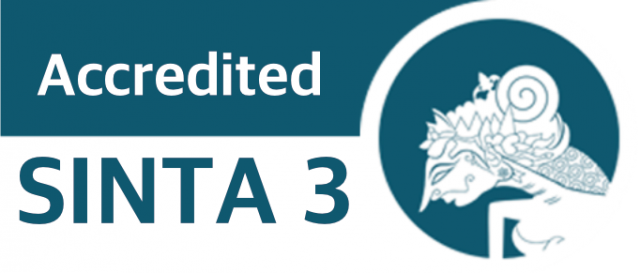Perubahan Misi Budaya Merantau: Studi Perantau Etnik Batak Di Kawasan Industri Cikarang, Bekasi
DOI:
https://doi.org/10.24114/antro.v9i1.49533Keywords:
Cultural Values, Cultural Mission, Migrating, Permanent and Temporary MigratingAbstract
The cultural values of Dalihan Na Tolu, religion, hagabeon, hasangapon, hamoraon, hamajuon are normative values, continue to be preserved in nature bona pasogit and become a cultural mission in the Toba Batak ethnic migration activities. Factors that influence the activities of migrating Toba Batak ethnicity are closely related to push-pull factors that combine with the socio-cultural conditions of the migrants' hometowns. The process of migrating them is distinguished by permanent and non-permanent, their arrival to the destination of migrating is direct and indirect. Considering that the destination for migrating is an industrial and business area, the cultural mission of migrating is not meant to halului anak, halului tano and build the Batak harajoan. The arrival of migrants to the destination area is to earn a living and survive because the destination area for migrating is the Cikarang industrial area which has developed into one of the landscapes of the largest business empire in Indonesia.References
Geertz, Clifford (1967). œThe Integrative Revolution: Primordial Sentiments and Civil Politics in the New States, in Clifford Geertz (ed.) Old Societies and New States, 3rd Edition. New York: The Free Press.
Harahap, Basyral Hamidy dan Siahaan, Hotman M. (1987). Orientasi Nilai -nilai Budaya Batak : Suatu Pendekatan Terhadap Perilaku Batak Toba dan Angkola Mandailing. Jakarta : Sanggar Willem Iskandar.
Hidayat, Eron L Damanik, 2018. œBatak dan Bukan Batak: Paradigma Sosiohistoris Tentang Konstruksi Identitas Etnik Di Kota Medan 1906-1939. Jurnal Sejarah Citra Lekha, Vol. 3 , No. 2, 2018, hlm. 71-87
Lee, Everett S. 1975. Population and Scarcity of Food. Thw Annals of the American academy of Political and Social Sceince, Volume 420, Issue 1, https://doi.org/10.1177/ 000271627542000102.
Mantra. 2009. Demografi Umum. Yogyakarta: Pustaka Pelajar.
Moleong, Lexi J. 2011. Metode Penelitian Kualitatif. Bandung: PT Remaja Rosdakarya.
Naim, Mochtar, 2013. Merantau: Pola Migrasi Suku Minangkabau.
Divisi Buku Perguruan Tinggi, PT RajaGrafindo Persada.
Nainggolan, Togar. 2012. Batak Toba di Jakarta: Kontinuitas dan Perubahan Identitas. Medan: Bina Media Perintis.
Pelly, Usman (2013) Urbanisasi dan Adaptasi: Peranan Misi Budaya Minangkabau dan Mandailing di Kota Medan. Medan: Unimed Press dan Casa Mesra.
Perret, Daniel (2010). Kolonialisme dan Etnisitas: Batak dan Melayu di Sumatera Timur Laut. Jakarta: Kepustakaan Popular Gramedia dan EFEO-Jakarta.
Reid, Anthony (2009). œIs there Batak History, in John N. Miksic, J. David Neidel and Mai Lin Tjoa-Bonatz (eds). From Distant Tale: Archaeology and Etnohistory in the Highlands of Sumatra. Newcastell: Cambridge Scholars Publishing.
Riyadi, Azhar, 2019. Meraantau: Sebuah pilihan atau keterpaksaan? Studi Supir Angkutan Kota Perantau Batak Angkola-Manadailing Di Kota Bandung. IJSSE: Indonesian Journal of Social Science Education Volume 1, Nomor 1, Januari 2019.
Rodgers, Susan. (2002). Compromise and Contestation in Colonial Sumatra an 1873 Mandailing Schoolbook on the ˜wonders of the west™ dalam Bijdragen tot de Taal-,Land-en Volkenkunde, Journal of the Humanities and Social Sciences of Southeast Asia and Ocenia No. 158- 3. Jakarta: KITLV and KITL Press Agency in Indonesia.
Royce, Annya Peterson (1983). Ethnic Identity: Strategies of Diversity. Bloomingston: Indiana University Press.
Rusli, Said. 1994. Pengantar Ilmu Kependudukan. Bogor-Jakarta. LP3ES.
Schwartz, S. H., & Bardi, A. (2001). Value hierarchies across cultures: Taking a similarities perspective. Journal of CrossCultural Psychology, 32(3), 268“290.
Shils, Edward M. (1957). œPrimordial, Person, Sacred, and Civil Ties, The British Journal of Sociology 8: 130-145.
Sianipar, Bangarna. 1997. Horas dari Batak untuk Indonesia. Jakarta: CV. Eks Dharma.
Simanjuntak, B. A. (2009). Konflik status dan kekuasaan Orang Batak Toba- Bagian Sejarah Batak. (Edisi Revisi). Jakarta: Yayasan Pustaka Obor Indonesia.
Sinaga, Richard. (2007). Perkawinan Adat Dalihan Na Tolu. Jakarta : Dian Utama dan Kerabat.
Spardley, James. 2006. Metode Etnografi. Tiara Wacana : Yogyakarta.
Sugiono. 2009. Metode Penelitian Pendidikan (Pendekatan Kuantitatif, Kualitatif, R &D). Bandung: Alfabeta.
Prakoso, Jaffry Prabu (2022). Kawasan Industri Terbesar di Asia Tenggara Ada Di Cikarang. Binis Indoensia, 19 September 2002. https://bisnisindonesia.id/article/kawasan-industri-terbesar-di-asia-tenggara.
Purba, Krismus dan Wulan Sari, Ratna, 2022. Merantau Sebagai Inspirasi Karya Mangaratto. Selonding Jurnal Etnomusikologi Vol. 18, No. 1 : Maret 2022.
Tirtosudarmo, Riwanto.2009. Mobility and Human Development in
Indonesia: Human Development Research Paper 2009/ 21 Juli 2018. UNDP
Downloads
Published
How to Cite
Issue
Section
License
Copyright (c) 2023 Anthropos: Jurnal Antropologi Sosial dan Budaya (Journal of Social and Cultural Anthropology)

This work is licensed under a Creative Commons Attribution 4.0 International License.

This work is licensed under a Creative Commons Attribution 4.0 International License
Authors who publish with this journal agree to the following terms:
- Authors retain copyright and grant the journal right of first publication with the work simultaneously licensed under Creative Commons Attribution 4.0 International License that allows others to share the work with an acknowledgement of the work's authorship and initial publication in this journal.
- Authors are able to enter into separate, additional contractual arrangements for the non-exclusive distribution of the journal's published version of the work (e.g., post it to an institutional repository or publish it in a book), with an acknowledgement of its initial publication in this journal.Penulis.
- Authors are permitted and encouraged to post their work online (e.g., in institutional repositories or on their website) prior to and during the submission process, as it can lead to productive exchanges, as well as earlier and greater citation of published work (Refer to The Effect of Open Access).


